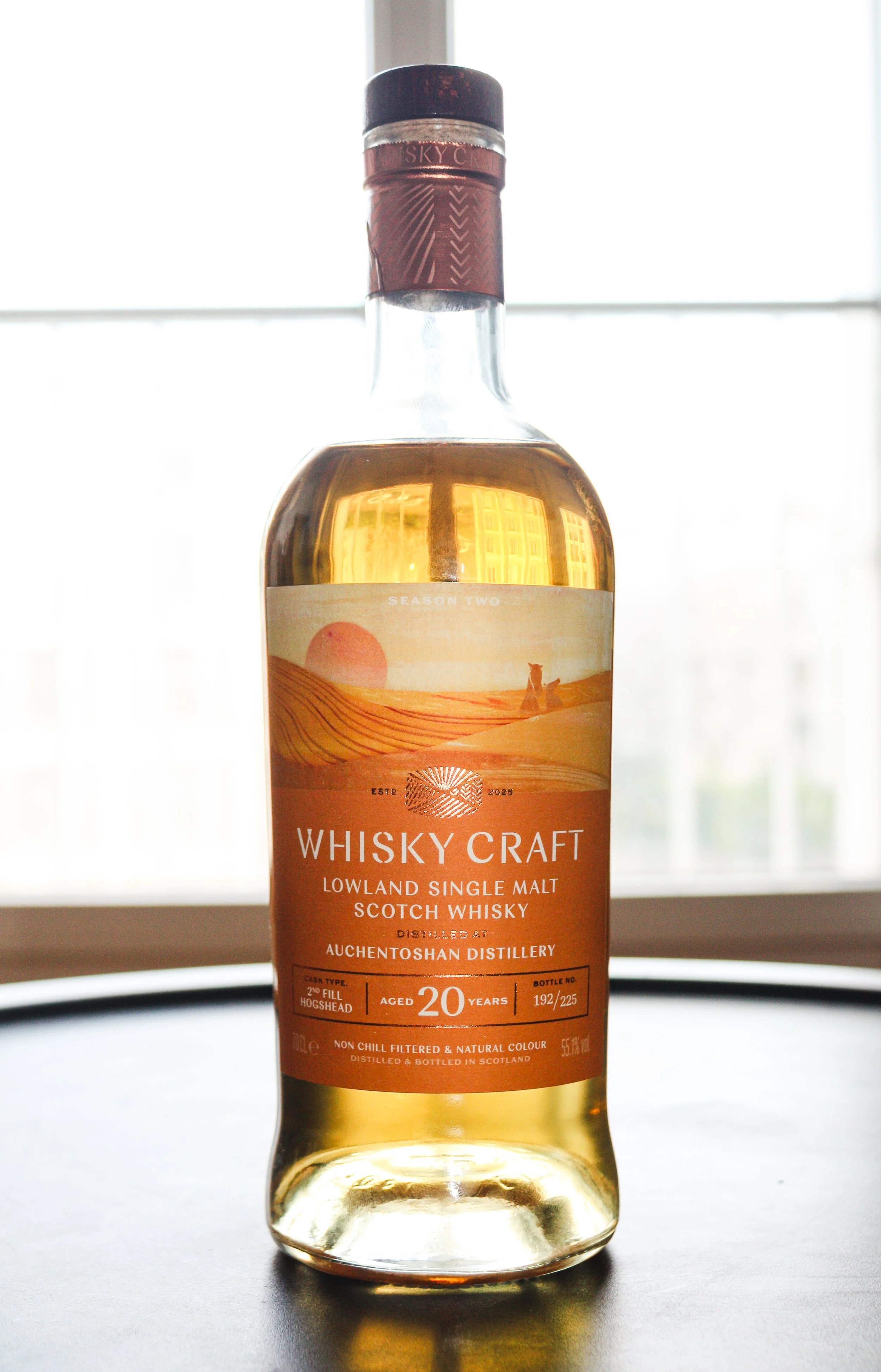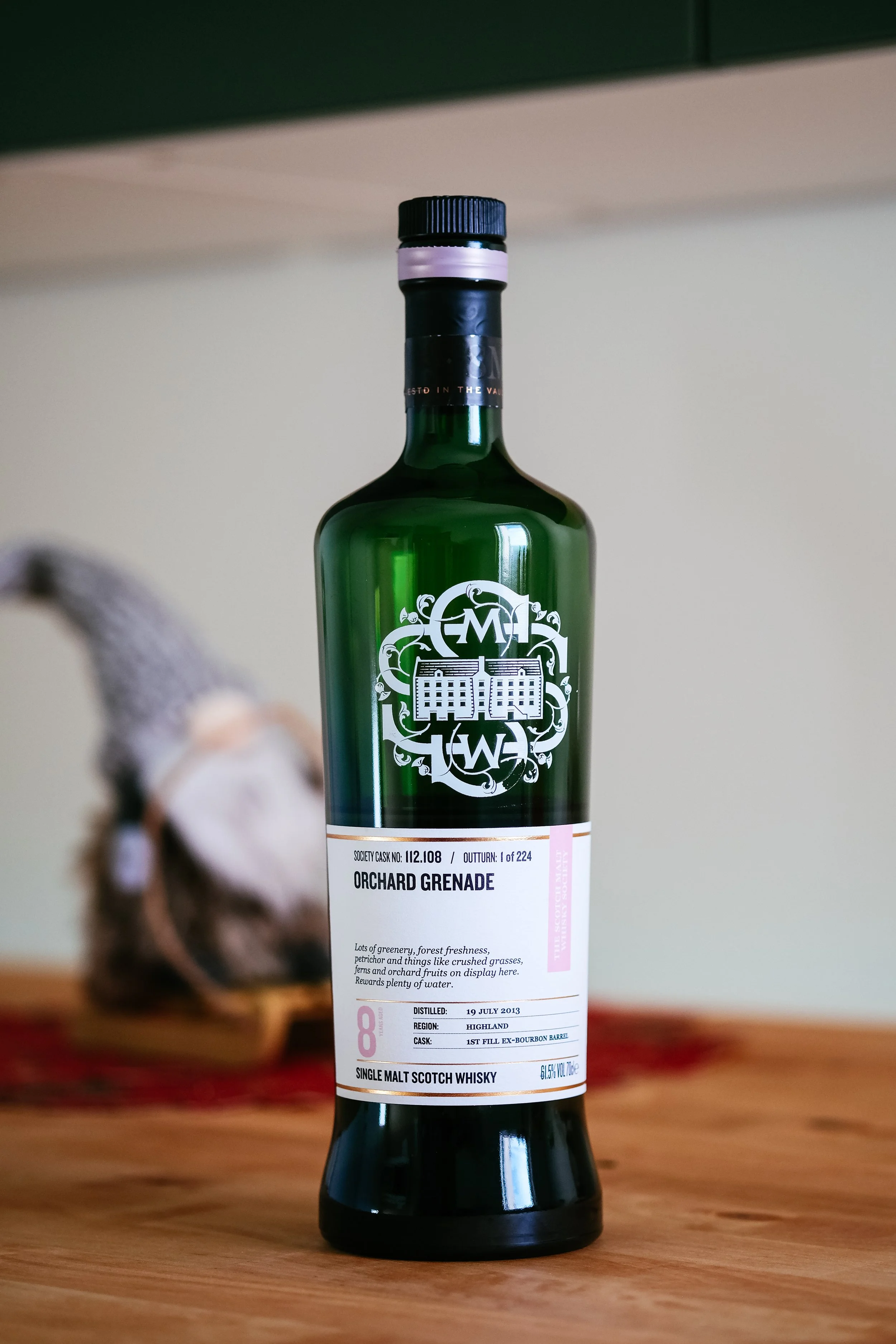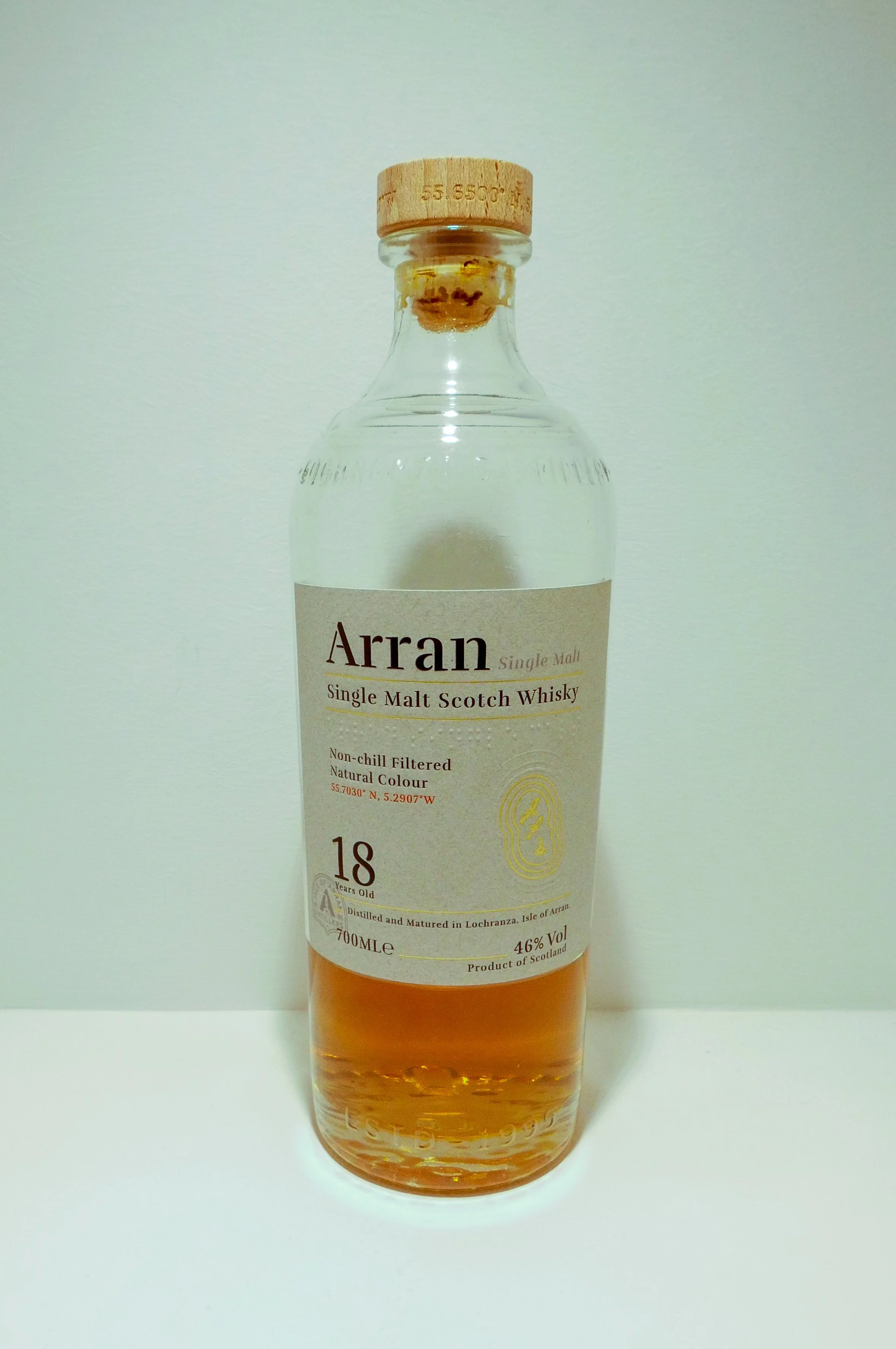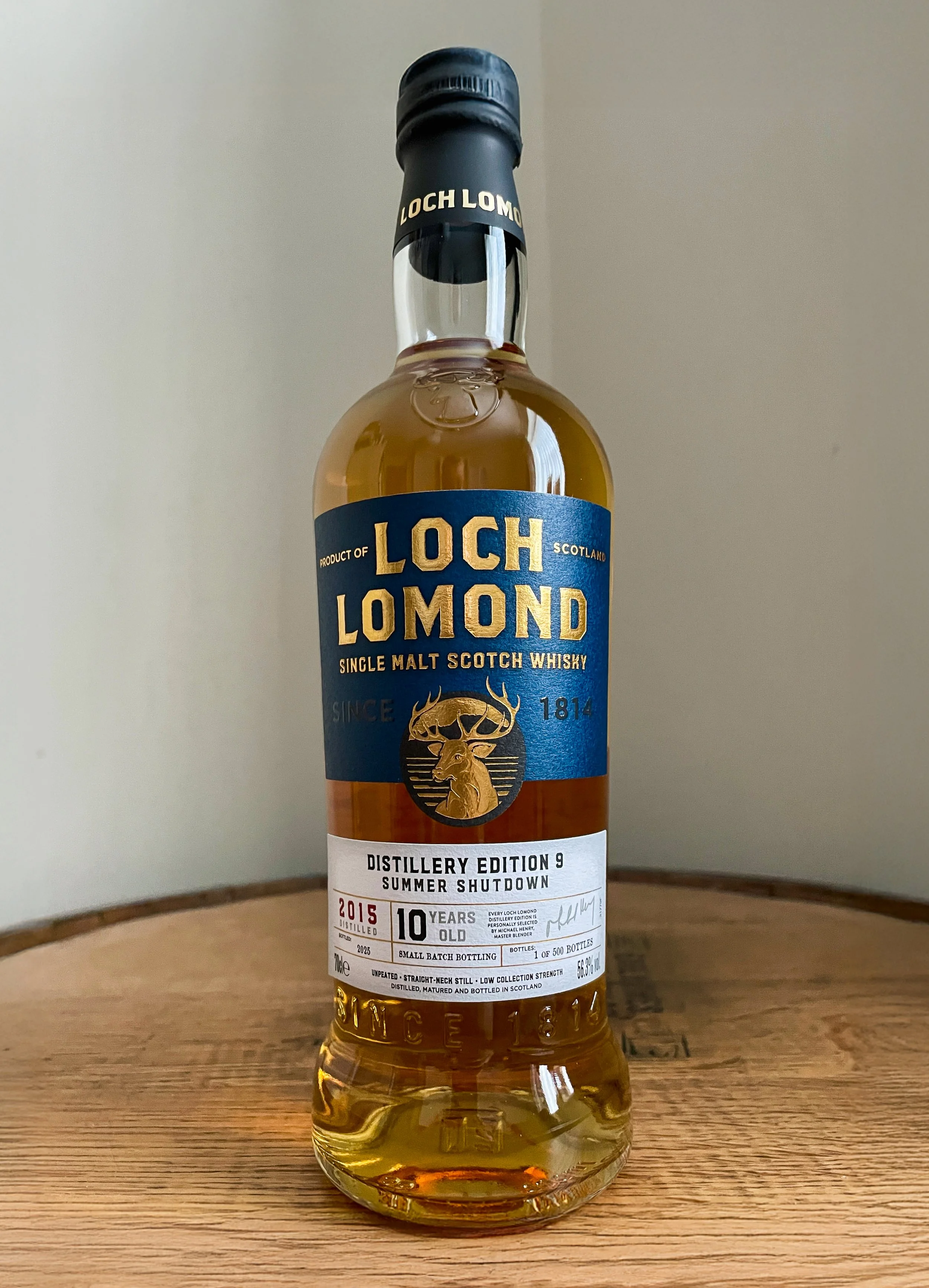Loch Lomond Limousin Oak
2020 European Tour Exclusive Cask | 55.1% ABV
Score: 7/10
Very Good Indeed.
TL;DR
Loch Lomond and Limousin oak working well together
My Happy Place
I think we all know that whisky education broadens through means other than nosing and tasting. And, I think we all realise and appreciate the importance of shutting our mouths and using our ears as we soak up information to learn from others.
While, no doubt, my whisky education is bolstered from nosing and tasting to build up a mental library of flavour profiles, perhaps more of my whisky education has come as a result of reading or listening.
I remain a sponge, learning from my peers and whisky elders. Whether it be Aqvavitae, Ralfy, or The Mash & Drum on the YouTube airwaves or reading the books from Charlie MacLean, David Stirk, and Dave Broom, I continually find new whisky knowledge to be gleaned.
Of course, my whisky education also comes from listening to friends as we sample and share experiences. To this end, I cannot begin to adequately express my appreciation for the knowledge I have soaked up from my fellow Dramface folk – not only through reading the reviews and whisky news in the pages of Dramface, but from the ever-ongoing WhatsApp chats.
A happy place. A free-flowing stream of wisdom in small bites and larger chunks amidst humour, sass, and commentary of things great and small on this blue orb. Everyone brings a different viewpoint and experience history to the table – and I cherish this eclectic mix of whisky vagabonds.
As we have contributors from across the globe, it’s an ongoing and amazing array of knowledge, experiences, and perspectives. There are, currently, thirty-one contributors. All are fascinating. Despite my desire to do so, I don’t have enough room – nor enough of your patience – to talk about all thirty others, so if I may give a few examples of some of our favorite Dramfacers…
Tyree is a veritable encyclopaedia (any Gen Zs know what those are?) of whisky knowledge. His biting, acerbic, and sarcastic commentary on the production end of whisky is endless and fascinating. He has forgotten more about the science of whisky than I will ever know in my lifetime. By the way, get him started on the lactic traits of old Bruichladdich, or red wine finishes in whisky, and sit back and enjoy the vitriol-laden education.
Dougie is the master of understatement and whisky curiosity. Invariably there are questions posed and comments made about casks, business models, time pieces, the folly of over-the-top design of products, and cockapoos. As a bonus, we are privy to some of the best photography this side of Ansel Adams. However, make disparaging remarks about haggis or Ardnamurchan at your own risk.
Calder is the (sadly) unpaid brand ambassador of Bunnahabhain, Glen Moray, and Ben Nevis. This salty and extraordinarily, hysterical cheeky lad keeps me in stitches at all times. His tales of whisky bars in Australia, trips to Japan and India, keep me enthralled with a constant yearning to hear more.
Eallair is our American single malt man who teases out the most minute details of geographic and historical data. If whisky history was a degree-producing educational avenue in colleges and universities, he would be the Ph D. master of the school. Have a question about the new TTB regulations for American Single Malt? Need to know the historical genetic makeup of what we now call bourbon? What about an education about spicy peppers? Oh, Eallair is your man.
Ainsley and Earie – two of our men on the European Continent – are peas from the same pod. They always bring great perspectives about whisky and malternatives including wines, cognacs, rums, etc. Their expanse of knowledge is amazing and hearing each chime in about various expressions never fails to bring some new aspect I had not known or considered. But, strangely enough, they are the hilarity snipers of our chats. When you least expect it, a shot of sarcasm and humor will ring out from out of the blue, and I find myself doing spit-takes as I read. They truly are as funny and sarcastic as they are knowledgeable – and I love it.
And then there is Broddy. If there was a poster child for the term “renaissance man”, we’d see Broddy. He never fails to amaze with his energy and single-handed determination to get things done. Whatever needs to be done. Work a 10 hour day each day for two weeks straight? Check. Simultaneously find time to: (1) parent young children with all that entails; (2) perform not-insignificant renovations to his house; (3) do repairs to all manner of machinery; and (4) all the while write prolifically for Dramface, start a whisky club, and become a talented blender. I am not sure of the fuel he burns to sustain himself, but I want some. Through it all, he imparts whisky wisdom. And, it was from him that I first heard about these Limousin oak casks.
When Broddy spoke of his appreciation for this oak and its impact on whisky, I listened. It wasn’t a huge amount of discussion, but his appreciation came through loud and clear. So, when I was combing through the thousand-plus lots of bottles in my last whisky auction adventure, this Loch Lomond bottle piqued my curiosity.
First, it was cask strength. As a Loch Lomond fan, this made me sit up a bit. As I read the label, I also saw it was aged in this Limousin oak, and I heard Broddy in my head speaking about his affinity for these types of casks. I didn’t need more to mark this lot as one I was “watching”. It just so happened that it fell in the category of my third auction challenge – finding a bottle from a favorite distillery with a unique (to me) twist.
Luck shone its beautiful light on me as the auction came and went, and this bottle went either un-noticed or un-appreciated by my fellow auction bidders.
So, Broddy…let’s see what you were talking about.
Review
Loch Lomond 2006, 1st-fill Limousin Oak, Exclusive Cask Selection, European Tour 2020, 55.1% ABV
£40 paid at auction
While it surprised me that the Cadenhead’s Benrinnes I snagged at auction was purchased for only £40, I was not as surprised to purchase this single cask Loch Lomond for the same price. For some reason – and this is just my own observation – I believe that many whisky aficionados still overlook Loch Lomond. For some reason the label doesn’t bring a sparkle to others’ eyes as it does for me. I have expressed my love for Loch Lomond in the past – my reviews of the 12 and 18 speak to that fondness.
As it turns out, my first Limousin cask whisky is a Loch Lomond. This is how it should be, as I was drawn to this by my prior chats with Broddy…and he and I both share that fondness for Loch Lomond.
Score: 7/10
Very Good Indeed.
TL;DR
Loch Lomond and Limousin oak working well together
Nose
Clover honey. Orange pith. Slightly tingly on the nose. Butterscotch pudding. Vanilla pods. Some spice – nutmeg and cinnamon. Hint of pipe tobacco. Bright and fruity. Some oak tannins at play here.
Palate
Canned peaches in heavy cling. Pink grapefruit juice. Effervescence comes along mid-palate and is a great sensory addition. This has a creamy vanilla vibe that courses over the palate. The Inchmurrin DNA is here. Cashew butter. Dried apricots and honeycomb. Leather after it has been rubbed with conditioning oil. Those spices of nutmeg and cinnamon are here and a light touch – just enough. Fruit, spice, and a tinge of effervescence make this a lovely pour. Lucious mouthfeel. Coating. Robust isn’t the correct term…better to say full and rounded. Tangy and zesty between the dried fruits and the effervescence. Another Loch Lomond banger.
The Dregs
I have to be perfectly honest – as I nosed and sipped this over the first few drams, I had no idea what Limousin oak would bring to the table. I recalled my chats with Broddy, but recalling a chat and translating it to a taste is something different. Nosing and tasting this dram was a joy.
This is a very good bottle of whisky. It has the signature fruitiness that I have come to associate with Michael Henry’s signature. Loch Lomond bottles, to me, often bring that fruit-forward aspect – and I do so enjoy it.
But this tasting experience also had a slight difference from my prior experiences with Loch Lomond. The fruits; specifically dried fruits as well as the spice were amped up just a smidge when compared to others I have had. It also brought a citrus and honey vibe, as well as a bit of cashew butter, that was new in my experience with this malt. Was this the Limousin oak?
Only after doing my first nosing and sipping and well past the shoulders - what would have been the top of the label - I looked online for some help to understand what these oak casks contribute to a whisky. There wasn’t a tremendous amount of helpful information (at least that I could find). Two sites, in particular, had some information. Whiskyadvocate.com provided this nugget:
‘Quercus robur [Limousin oak] is very porous as a species and it's slower growing than its American counterpart Quercus alba,’ explains Stuart MacPherson, Macallan's master of wood. ‘The spiciness, the dried fruits, are the different flavor characteristics you associate more with Quercus robur.’
The most helpful information I found, however, was from oakbarrels.shop/en. It had quite a bit of detail, and I would suggest you go to that particular site for its run-down regarding Limousin oak barrels. While you can examine the full article, I believe relaying a portion of what I read is helpful here:
During aging, Limousin oak releases a wide range of aromatic substances into the spirit, shaping the flavor profile significantly: Impart a structured, slightly bitter note to the distillate[;] Support aroma development and color stability[; and] Promote ageability and complexity.
Lignin Degradation Products
Toasting creates intense roasted aromas such as cinnamon, clove, hazelnut.
Mild caramel notes complement the profile.
Strong wood aromas are typical and distinctive.
Vanillin
Adds a subtle vanilla note.
Less dominant than in American oak.
Fine sweetness harmonizes perfectly with spicy accents.
Floral & Spicy Notes
Typical spice notes: nutmeg, pepper, toasted bread.
With extended aging, floral nuances often develop.
Aroma Profile Of Spirits In Limousin Oak Barrels
Spirits aged in Limousin barrels are characterized by the following traits:
Robust spice: Intense notes of cinnamon, nutmeg, clove, pepper.
Woody depth: Complex aromas of oak, leather, tobacco.
Delicate sweetness: Hints of vanilla, caramel, nut.
Structure & aging potential: Tannins provide a rounded, long-lasting mouthfeel.
It would seem, then, that yes, I was detecting and experiencing those special Limousin oak characteristics. I’m rather proud of myself now that I’ve done some searching about the specifics of Limousin oak, and I can verify that I recognised those cask traits in my nosing and tasting. Always learning. Reading, listening, and tasting. I now carry a bit of Limousin oak knowledge.
This thirteen year old whisky is one of five special edition bottles that were to be released in the COVID year of 2020. Each of the five was linked to a different event venue of the European Tour during its “Golf for Good” UK Swing Tour, and each was made unique by utilising its own type of cask. This was the Limousin oak cask expression. The others were: oloroso, sauternes, rum, and tawny port. I have not had any of the other four, and I hope that those others can match the quality of this bottling.
This new-to-me cask type is so very good, but the marriage of Loch Lomond spirit and Limousin oak has worked wonders here. That said, I don’t know how much of the wood transformed this already good cask strength Loch Lomond spirit. Regardless, with all due respect to the more analytical and scientific among us – I channel my inner Rhett Butler to say, “frankly my dear, I don’t give a damn!” It’s just damned good whisky.
Three of the four bottles from my auction haul have now been reviewed, with two out of three being fantastic finds. And, no disrespect to the Blair Athol, the Benrinnes, and this Loch Lomond that I scored, it’s the last bottle that has me the most intrigued…
Until then – thanks for the knowledge Broddy!
I will keep listening…
Score: 7/10
Tried this? Share your thoughts in the comments below. OS
-
Dramface is free.
Its fierce independence and community-focused content is funded by that same community. We don’t do ads, sponsorships or paid-for content. If you like what we do you can support us by becoming a Dramface member for the price of a magazine.
However, if you’ve found a particular article valuable, you also have the option to make a direct donation to the writer, here: buy me a dram - you’d make their day. Thank you.
For more on Dramface and our funding read our about page here.





































